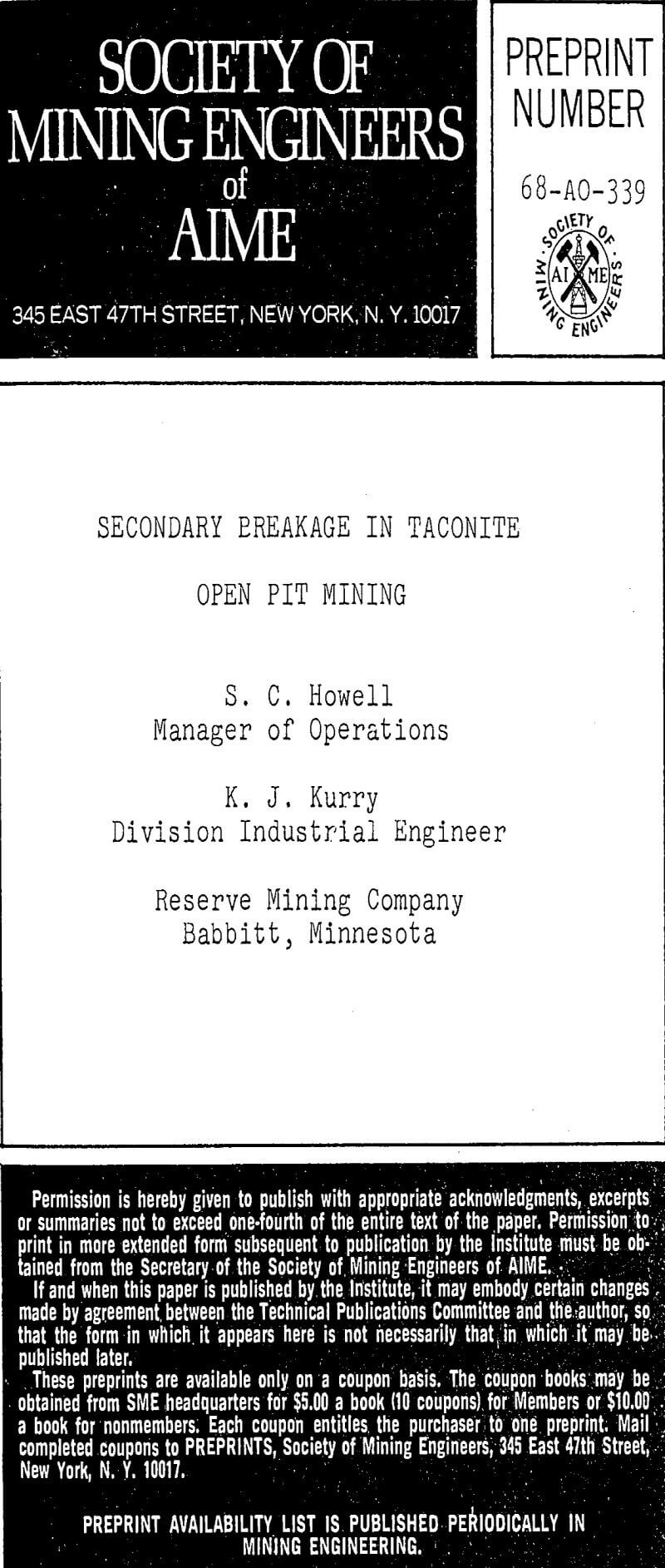The mining of taconite, to provide feed for a processing plant, requires that the flow of material continue uninterrupted. This means first, that the crude must be of a size acceptable to the primary crusher in order to reduce the delays caused by plugging the crusher with chunks. Secondly, elimination of oversize in the pit will reduce costs of all wear parts used in the mining and processing of taconite. Savings in wear parts is readily recognized in dipper teeth, bases, buckets, truck boxes, and crusher parts, both primary and secondary.
During the early days of taconite mining, it was soon recognized at reserve mining company’s Babbitt operations that experience in mining other ores was not always (or “necessarily”?) applicable to excavating taconite. This was especially true in drilling and blasting. Blasting of small tonnages in single or double rows simply filled the pit with scattered chunks and provided very shallow banks for shovel loading. It also created problems for the jet piercers, since all drilling had to be performed in fractured areas. drilling efficiency suffered and costs were extremely high. Shovel and truck efficiencies were also low and again costs were high.
The diesel track mounted crane, equipped with a drop ball, was still being used during this testing period, and was considered to be the best method. As the pit continued to expand, the drop ball method became less troublesome. However, the potential hazard still remained, as did the high operating cost for the crane, due mostly to cable damage. The track mounted crane was also undesirable from the standpoint of mobility. Much productive time was lost in moving from one location to another—a problem which increases as pit development continues.
At this time, the drop ball is still the most practical means of performing secondary breakage of taconite at reserve. The track-mounted crane has been replaced with a tire-mounted mobile crane. this unit, being highly mobile, has greatly reduced moving time delays previously encountered with the track-mounted crane, use of the tire-mounted crane has also reduced the cost per operating hour.

